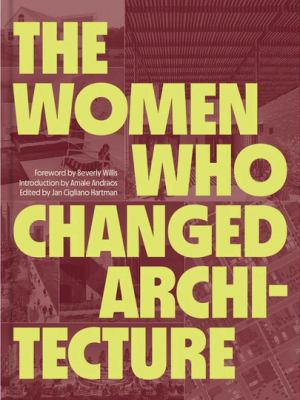| Echo's Chambers : Architecture And The Idea Of Acoustic Space |
| | ISBN: 9780822946571 | Price: 60.00 | | |
| Volume: | Dewey: 729.2909 | Grade Min: | Publication Date: 2021-06-08 | |
| LCC: | LCN: NA2800 | Grade Max: | Version: | |
| Contributor: Clarke, Joseph L. | Series: | Publisher: University of Pittsburgh Press | Extent: 320 | |
| Contributor: | Reviewer: Jack Quinan | Affiliation: emeritus, independent scholar | Issue Date: March 2022 | |
| Contributor: | | | | |
 The arc of Clarke's extraordinarily rich history of architecture and acoustic space begins in 17th-century Rome as Jesuit scholar Athanasius Kircher strives to enhance the devotional impact of church music through the geometric analysis of echo ("echotectonics"). The narrative then shifts to 18th-century France, where empiricist architects Pierre Patte and Claude-NicolasLedoux continue the graphic technique in the design of elliptically shaped theaters. In chapter 3 Clarke looks at C. F. Langhans's challenges of the graphic approach in favor of a theory of enhanced reverberation, and in chapter 4 Richard Wagner's efforts to "liberate audiences from the shackles of reason" through a gesamtkunstwerk--Bruckwald's innovative Bayreuth Festspielhaus--to produce a unique auditory environment. Clarke's exacting and thrilling analysis of the role of electroacoustics in Le Corbusier's Notre Dame du Haut at Ronchamp defies condensation here, but it emboldens him to challenge a host of distinguished historians including Pevsner, Norberg-Schulz, McLuhan, Pallasmaa, and Ong, many of whom choose to ignore that echo and reverberation have been quantitatively measured, analyzed, and ameliorated. Finally, Clarke encourages architectural schools to pay more attention to acoustics.Summing Up: Essential. Upper-division undergraduates through faculty; professionals. |
| The Other Modern Movement : Architecture, 1920-1970 |
| | ISBN: 9780300238891 | Price: 50.00 | | |
| Volume: | Dewey: 724.6 | Grade Min: | Publication Date: 2022-01-25 | |
| LCC: 2020-943369 | LCN: NA682.M63 | Grade Max: | Version: | |
| Contributor: Frampton, Kenneth | Series: | Publisher: Yale University Press | Extent: 344 | |
| Contributor: | Reviewer: William Steven Bradley | Affiliation: emeritus, Colorado State University | Issue Date: September 2022 | |
| Contributor: | | | | |
 This history of architectural modernism is by one of the leading architectural historians of the last half century. Frampton (emer., Graduate School of Architecture, Planning, and Preservation, Columbia Univ.) has a long-standing interest in 20th-century architecture that combines the principles of modernism with elements of place and functional use particular to specific projects and results in distinctive regional variants of that dominant movement. In the present volume he contributes insightful analyses of major practitioners of the so-called international style and their key monuments. He focuses on particular examples of "critical regionalism," structures and their creators. He examines 19 architects active from the 1920 to 1970 and their major projects. Some familiar names appear (Richard Neutra, Eileen Gray, Arne Jacobsen), but readers will encounter many, e.g., Pierre Chareau and Jaromir Krejcar, for perhaps the first time. Similarly, the range of design types discussed departs from the standard typology, extending from interior and furniture design to railway terminals. The resulting examination adds important insights and footnotes to understanding modernism. The publication also includes an extensive bibliography of critical appreciation for each architect.Summing Up: Highly recommended. Upper-division undergraduates through faculty and professionals. |
| The Porch : Meditations On The Edge Of Nature |
| | ISBN: 9780226769950 | Price: 26.00 | | |
| Volume: | Dewey: 721.84 | Grade Min: | Publication Date: 2021-04-01 | |
| LCC: 2020-036203 | LCN: NA7125.H35 2021 | Grade Max: | Version: | |
| Contributor: Hailey, Charlie | Series: | Publisher: University of Chicago Press | Extent: 224 | |
| Contributor: | Reviewer: Robert Paul Meden | Affiliation: Marymount University | Issue Date: April 2022 | |
| Contributor: | | | | |
 Who would have ever thought that a simple attachment to an abode could generate a several-hundred-page missive? Obviously, architect Charlie Hailey (Univ. of Florida) did, and he asks the reader to join him in The Porch: Meditations on the Edge of Nature. Stepping out, he takes one on a journey through a series of philosophical questions, addressing a wide range of thoughts and concerns. This is not a history of porches, or even specifically Hailey's porch, but rather a view of the window on the world a porch provides, and its ability to connect one to the world. The evidence has never been more greatly appreciated than now, with the challenges of the pandemic. Hailey's porch takes on greater significance as the realization of rising sea levels and the increasing magnitude of storms jeopardizes the existence of the porch beyond this generation. Yet the porch has provided multiple lifetimes of views, other than one's own, on the juxtaposition of nature and humans. Sitting out on the porch will never be the same once one reads this book.Summing Up: Highly recommended. All readers. |
| The Women Who Changed Architecture |
| | ISBN: 9781616898717 | Price: 50.00 | | |
| Volume: | Dewey: 720.82 | Grade Min: | Publication Date: 2022-03-29 | |
| LCC: 2021-943860 | LCN: NA1997 | Grade Max: | Version: | |
| Contributor: Willis, Beverly | Series: | Publisher: Princeton Architectural Press | Extent: 336 | |
| Contributor: Andraos, Amale | Reviewer: Rebecca Hackemann | Affiliation: Kansas State University | Issue Date: August 2022 | |
| Contributor: Hartman, Jan Cigliano | | | | |
 This volume charts the biographies and career trajectories of 121 women architects, starting in the 1850s, and presents examples of groundbreaking work. Women have expanded architecture as a field, weaving together new forms of working and engaging with different populations, media, and sites. But though women have been working as architects for more than 100 years, they have been absent when it comes to awards and industry accolades. Traditionally, women architects were relegated to drafting in large architecture firms or designing interiors, kitchens, public housing, and landscapes and gardens. The book traces some of the shifting frames of this struggle over many generations. These women designed large bold projects and lived long, productive, and complex lives. Just like their male colleagues, they taught and wrote and engaged in other professions (e.g., photography). The book's co-publisher, the Beverly Willis Architecture Foundation, asks that readers use the book not as a chronology per se but rather as a framework for understanding generational shifts of power. As such, it serves as an extensive catalog of women architects that is far more exhaustive than other recent, similarly themed books. One cannot help but be encouraged and inspired by the vivid professional and personal life stories.Summing Up: Highly recommended. |
| Urban Play : Make-believe, Technology, And Space |
| | ISBN: 9780262045346 | Price: 30.00 | | |
| Volume: | Dewey: 711.558 | Grade Min: | Publication Date: 2021-08-03 | |
| LCC: 2020-047250 | LCN: NA9053.S6D85 2021 | Grade Max: | Version: | |
| Contributor: Duarte, Fabio | Series: | Publisher: MIT Press | Extent: 224 | |
| Contributor: Alvarez, Ricardo | Reviewer: Lauren B. Allsopp | Affiliation: Arizona State University | Issue Date: July 2022 | |
| Contributor: | | | | |
 Digital technology and forensic analysis of play can ruin its spontaneity. However, in Urban Play, Duarte and Alvarez, both associated with the MIT Senseable City Lab, argue that "technology is powerful not when it becomes optimally functional but when it is essentially playful--when imagining and tinkering with technology equals imagining and tinkering with possible futures" (p. xi). In the book's introduction and seven chapters, the authors present technology and the transformation of spatial design by examining serendipity, fantasies (e.g., Frank Gehry's architecture), spatialities (e.g., digital water parks), deception (e.g., optical illusions), and empathy (e.g., that enabled by virtual reality headsets), to name a few. In numerous ways, all can shape urban environments. The authors also mention projects such as Playable City's project Shadowing: when a "streetlight detects a pedestrian it not only lights up but also projects ... shadows of other people who passed the streetlight earlier," thus promoting instant play. These concepts are largely in-depth discussions of what many people are already aware of, but it is good to be reminded of the value play can bring to life and locations. This playful book joins such works as Cathy Baldwin and Robin King's Social Sustainability, Climate Resilience and Community-Based Urban Development: What about the People? (2018).Summing Up: Highly recommended. Upper-division undergraduates through faculty and professionals; students in two-year programs. |











